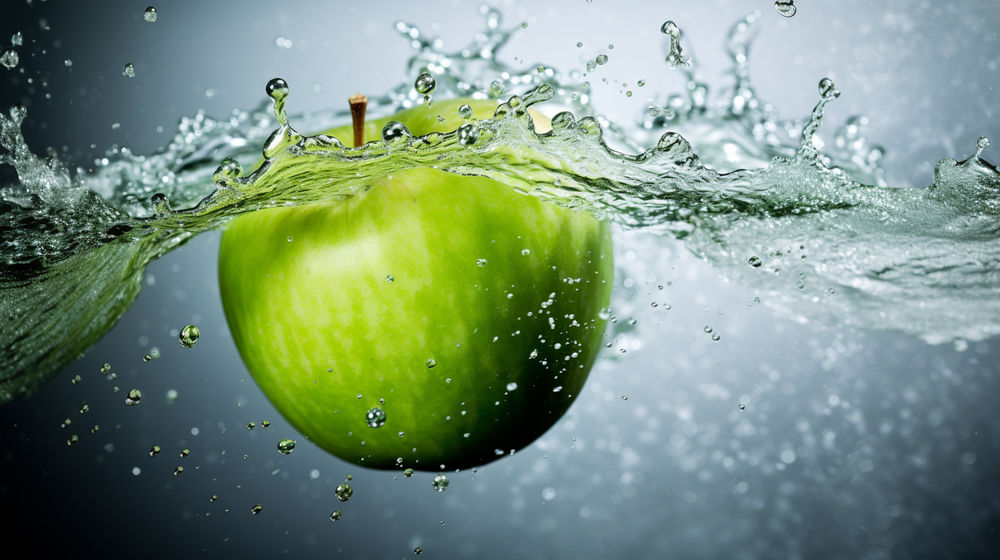Is reheated spinach poisonous?
Advertisement
A few facts about saving food: To mark European Food waste prevention Week from 16 to 23 November, the NRW Consumer Advice Center is clearing up misconceptions about the shelf life of food - from the edibility of spotty carrots to the myth that reheated spinach is dangerous. This year's motto of the nationwide campaign week is "Down to the last crumb: use food carefully" and focuses on avoiding food waste.

Is reheated spinach poisonous?
© VZ NRW/adpic
Misconception 1: Mold on jam can simply be removed and then eaten
Unfortunately, this is not true. Anyone who discovers mold on jam and only scrapes off the moldy layer is risking their health. The mold forms fine, invisible threads that can run through the entire fruit spread. The jam should therefore be disposed of completely. To avoid this, a hygiene trick helps: always scoop it out of the jar with a clean spoon to prevent germs and mold spores. This keeps the spread fresh for longer.
Misconception 2: Spinach must not be reheated
This is no longer completely true. It is true that the nitrate contained in spinach converts into nitrite, which is harmful to health, when it is reheated under certain conditions. However, if stored correctly in the fridge and eaten quickly after reheating, the risk is minimal. Tip for optimum utilization: Cool leftovers quickly after cooking and store them in the fridge. Then reheat only once and consume immediately.
Misconception 3: Milk is best stored in the fridge door
Definitely not! The fridge door is one of the warmest places in the fridge - often around 10 degrees. This is too warm for milk, especially raw milk, which should be stored at a maximum of 8 degrees. Tip: It is better to store milk in the second compartment from the top. The temperature here is ideal and the risk of premature spoilage is significantly reduced. For plant-based drinks, on the other hand, the temperature in the fridge door is sufficient.
Misconception 4: If the bread is moldy, it is sufficient to dispose of the affected slice
Unfortunately, this is also wrong. Mold spreads in bread in a similar way to jam - it permeates the entire product with a fine network of spores. The invisible threads can also infest slices of bread that still appear fresh at first glance. So it's better to dispose of the whole loaf. Tip for longer shelf life: Store bread in a cool, dry place. Storing it in a wooden or ceramic bread box helps to prevent mold.
Misconception 5: Carrots with dark spots must always be thrown away
Yes and no. If dark spots appear, cut them away generously and use the carrots quickly. The spots are often caused by fungal infestation. If they are older, have spread or the carrot tastes bitter, it should no longer be eaten. Tip: Carrots like to be stored in a cool, dark place. Cut off the green part of bunched carrots and store the vegetables in the fridge. Always remove any foil packaging immediately, as this promotes mold growth.
Note: This article has been translated using a computer system without human intervention. LUMITOS offers these automatic translations to present a wider range of current news. Since this article has been translated with automatic translation, it is possible that it contains errors in vocabulary, syntax or grammar. The original article in German can be found here.
Other news from the department business & finance
Most read news
More news from our other portals
See the theme worlds for related content
Topic world Hygiene
Hygiene is the foundation of the food and beverage industry. Hygiene technology ensures that products are not only tasty, but most importantly, safe for consumption. From advanced cleaning processes to sterile filling techniques, the industry is constantly setting new standards to prevent contamination and the growth of microorganisms.

Topic world Hygiene
Hygiene is the foundation of the food and beverage industry. Hygiene technology ensures that products are not only tasty, but most importantly, safe for consumption. From advanced cleaning processes to sterile filling techniques, the industry is constantly setting new standards to prevent contamination and the growth of microorganisms.




























































